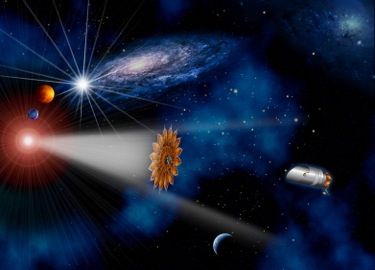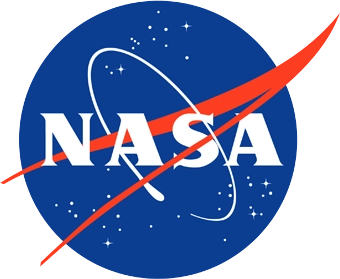Exo-S and Exo-C
Exoplanet Probe Mission Study Activities in 2014
NASA HQ initiated Science and Technology Definition Teams (STDTs) to study two concepts for relatively near-term, small-sized space telescopes aimed at direct observations of exoplanets and debris disks. The technical challenge of these concepts is high contrast imaging – the suppression of light from bright nearby stars in order to image faint objects around them like planets and orbiting dust disks generated by extrasoloar asteroids and comets. One mission concept – Exo-C – would use an internal coronagraph to do this job, allowing observations of planets from giants down to super-Earth sizes. The other mission concept – Exo-S – would use a second spacecraft for starlight suppression - a starshade free flying a large distance in front of the telescope. The second concept could look closer to nearby Sun-like stars, accessing more habitable zones and planets down to Earth size. A movie explaining how internal coronagraphs work can be viewed at http://exep.jpl.nasa.gov/coronagraphvideo. A companion video showing how starshades work can be viewed at http://planetquest.jpl.nasa.gov/video/15. Exo-C and Exo-S were originally chartered as backup missions to AFTA/WFIRST. They or missions derived from them will be candidates for the next large NASA astrophysics mission after AFTA/WFIRST.
Exo-C STDT Activities
The Exo-C STDT study produced a science case and a technology needs assessment, performed architecture trade studies, and arrived at a baseline design. The STDT and design teams refined the science case; improved the baseline design to reduce mass and cost; conducted a second iteration of coronagraph design and performance evaluation; found through detailed modeling that the Exo-C configuration would have excellent wavefront stability; produced a detailed technology development plan; and finalized science performance and yield estimates including simulated images and spectra.
The Exo-C final baseline design consists of an unobscured Cassegrain telescope with a 1.4 m primary in an Earth-trailing orbit, designed for a three-year science mission lifetime. It carries a starlight suppression system (SSS) instrument capable of 10^?9 raw contrast, between 2 and 20 λ/D, between wavelenghts of 450 and 1000 nm, and spectral resolution ranging from R=70, and consists of the following elements (in optical train order): fine-guidance and low-order wavefront sensor (FGS/LOWFS), wavefront control (WFC) system, coronagraph, an integral field spectrometer (IFS), and an imaging camera. The instrument bench is located on the anti-sun side of the telescope to isolate it from spacecraft disturbances and to provide optimal packaging and polarization performance. The hybrid Lyot coronagraph is baselined for a 2017 project start, primarily because it provides the best demonstrated contrast, bandwidth, and polarization performance to date in testbed experiments on unobscured pupils. The PIAA and vector vortex coronagraphs have the potential to match the hybrid Lyot in these aspects and also provide better throughput and inner working angle performance. They remain options for a later project start. The study’s internal cost estimates are in decent agreement with external estimates by the Aerospace Corporation, showing a projected lifecycle cost very close to $1 B.
The final Exo-C design would take optical spectra of about a dozen giant planets detected by radial velocity, search more than 100 nearby stars for additional planets beyond the limits of radial velocity detection, take spectra of the brighest newly discovered exoplanets, image structure in hundreds of circumstellar dust disks, and measure the level of exozodiacal light in the habitable zones of more than 100 nearby stars. Planets down to super-Earth and perhaps even Earth sizes would be detectable. Orbits would be determined for newly discovered planets. The mission would yield spectrophotometry of ~35 known and new planets and spectra for around half of these.
Exo-S STDT Activities
The Exo-S team began by honing a single baseline mission, a starshade combined with a dedicated 1.1m telescope. The Starshade mission combines two spacecraft-a telescope and starshade-aligned to suppress light from exoplanet host stars and detect and characterize a range of different kinds of exoplanets. This approach offers several advantages, including inherently broadband images, an outer working angle limited only by detector size, and the ability to detect Earth-size planets even with a small telescope aperture. The Exo-S team also considered a separate starshade-only mission that would fly with an existing telescope such as AFTA/WFIRST.
The contrast of starshade missions is limited by manufacturing and deployment errors, thermal deformations and formation flying errors; this study assumed a contrast of 4×10^-11 as a design goal. The missions studied by the Exo-S team would all characterize about a dozen known gas giant planets at a spectral resolution of R=70, like the Exo-C mission. But the intrinsically higher contrast of this method would allow a starshade to reach down to planets in the size range of super-Earths and even Earth analogs.
Key Staff
- Project Scientist: Michael McElwain
- Project Scientist: KARL STAPELFELDT

